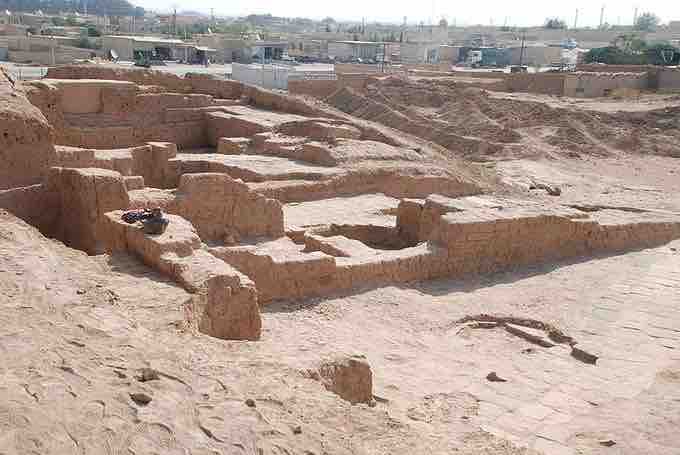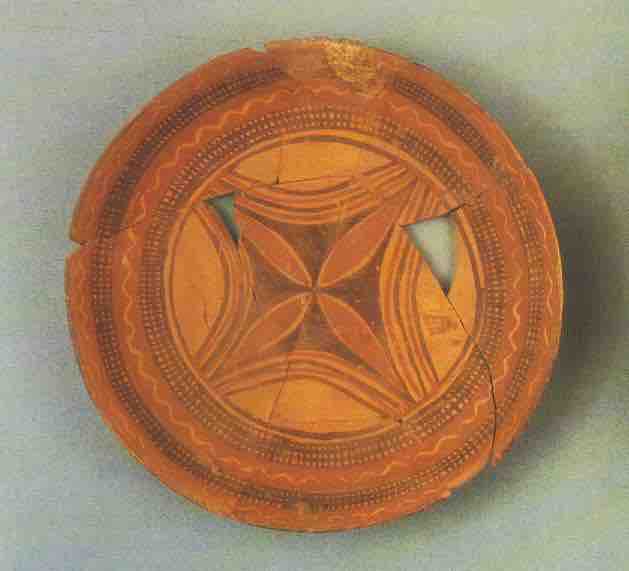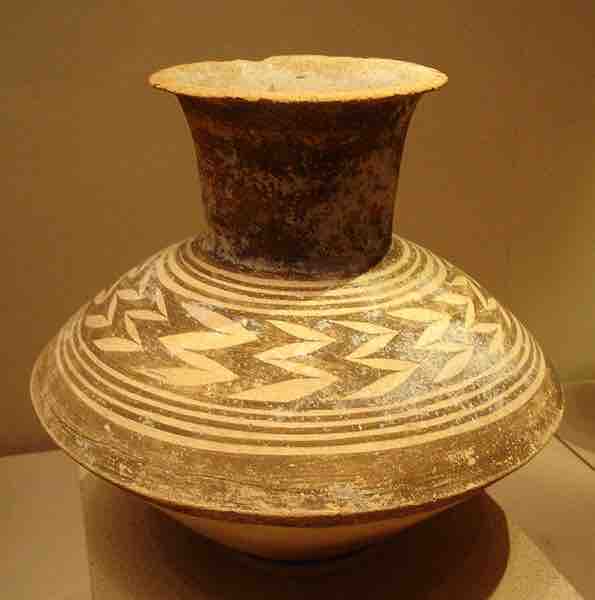The Neolithic, or New Stone Age, was a period in human development that originated around 10,000 BCE, lasting until 3000 BCE. Considered the last part of the Stone Age, the Neolithic period is signified by a progression in behavioral and cultural characteristics including the cultivation of wild and domestic crops and the use of domesticated animals.
The ancient Near East was home to the earliest civilizations within a region roughly corresponding to the modern Middle East and included Mesopotamia, ancient Egypt, ancient Iran, the Levant and the Arabian peninsula. Sites in these locations that go back to approximately 9500 BCE are considered the beginning points of the Neolithic period.
Neolithic culture in the Near East is separated into three phases, Neolithic 1 (Pre-Pottery Neolithic A), Neolithic 2 (Pre-Pottery Neolithic B), and Neolithic 3 (Pottery Neolithic).
Neolithic 1 (PPNA)
The Neolithic 1 phase is commonly believed to have begun with a temple located in southeastern Turkey at Gobekli Tepe dating from circa 10,000 BCE. The structure serves as the oldest known human-made place of worship. The site features seven stone circles covering 25 acres that contain limestone pillars, believed to have supported roofs of some form, carved with animals, insects, and birds. The very complexity of the temple informs us of the effort involved in its construction and the implication that only long-term settlers could have built it. The major advances of the Neolithic 1 phase revolve around developments in farming practices, such as harvesting, seed selection and the domestication of plants and animals.

View of Gobekli Tepe
Situated in the southeastern Anatolia Region of Turkey, it is recognized as the oldest known human-made religious structure.
At the oldest layer of Gobekli Tepe, T-shaped mud brick pillars decorated with abstract, enigmatic pictograms and carved animal reliefs. The pictograms may represent commonly understood sacred symbols, as known from Neolithic cave paintings elsewhere. The reliefs depict mammals such as lions, bulls, boars, foxes, gazelles and donkeys; snakes and other reptiles, arthropods, such as insects and arachnids, and birds, particularly vultures. It is believed that the deceased were likely exposed to be consumed by vultures and other carrion birds.
Pillar with low reliefs of what are believed to be a bull, fox, and crane.
Although pillars with animal reliefs are abundant in Gobleki Tepe, very few depictions of human and humanoid figures have been found.
At the time the edifice was constructed, the surrounding country was likely to have been forested and capable of sustaining this variety of wildlife, before millennia of settlement and cultivation led to the near–Dust Bowl conditions prevalent today.
Neolithic 2 (PPNB)
The Neolithic 2 began around 8800 BCE and is characterized by settlements built with rectangular mud-brick houses with single or multiple rooms, the greater use of domesticated animals, and advancements in tools. These developments in architecture point to settlement in permanent locations. While mud brick is perishable, the investment of time and effort in the construction of houses point to the desire of the builders to remain in a single location for the long term. Burial findings and the preservation of skulls of the dead which were often plastered with mud to create facial features suggest an ancestor cult of some form.
A settlement of 3,000 inhabitants was found in the outskirts of Amman, Jordan. Considered to be one of the largest prehistoric settlements in the Near East, called 'Ain Ghazal, it was continuously inhabited from approximately 7,250 – 5,000 BCE. This settlement produced what are believed to be the earliest large-scale human figures. Modeled from plaster, these sculptures consist of full statues and busts. Some of the busts are two-headed. Great effort was put into modeling the heads, with wide-open eyes and bitumen-outlined irises. The statues represent men, women and children. Women are recognizable by features resembling breasts and slightly enlarged bellies, but neither male nor female sexual characteristics are emphasized, and none of the statues have genitals. The only parts of the statue fashioned with any amount of detail are the faces.
Figures from 'Ain Ghazal (c. 7,500-5,000 BCE)
Plaster and bitumen. Amman, Jordan.
Although they were produced to be free-standing, it is likely they were intended to be viewed only from the front, hence their disproportionate flatness. The manufacture of the statues would not have permitted them to last long. Since they were buried in pristine condition it is possible that they were never on display for any extended period of time, but rather produced for the purpose of intentional burial.
Neolithic 3 (PN)
Beginning around 6400 BCE, this period is characterized by the emergence of distinctive cultures throughout the Fertile Crescent, such as the Halafian (Turkey, Syria, Northern Mesopotamia) and Ubaid (Southern Mesopotamia) cultures. It was during this time that pottery is first produced and used.
The use of ceramics is a direct effect of agriculture and the permanent settlements that arose as a result. No longer nomadic, individuals used ceramic vessels to store the food they grew or raised and water collected from local sources. Additionally, the need arose for plates, cups, and additional objects used in the consumption of food and beverages.
Halafian Period
Tell Halaf is an archaeological site in northeastern Syria, near the Turkish border, that flourished from about 6100 to 5400 BCE. It was the first site of Neolithic culture, which was subsequently dubbed Halafian culture, characterized by findings of glazed pottery painted with geometric and animal designs.

View of the excavated ruins at Tell Halaf, Syria
It was the first find of the Neolithic culture, subsequently dubbed the Halaf culture.
The best known, most characteristic pottery of Tell Halaf, called Halaf ware, produced by specialist potters, can be painted, sometimes using more than two colors (called polychrome) with geometric and animal motifs. Other types of Halaf pottery are known, including unpainted, cooking ware and ware with burnished surfaces. There are many theories about why the distinctive pottery style developed.
The polychromatic painted Halaf pottery has been proposed to be a "trade pottery"—pottery produced for export—however, the predominance of locally produced painted pottery in all areas of Halaf sites including potters settlement questions that theory. That said, Halaf pottery has been found in other parts of northern Mesopotamia and at many sites in Anatolia (Turkey) suggesting that it was widely used in the region.

Example of Halafian pottery
These were produced by specialist potters. Some were painted with geometric and animal motifs.
In addition to ceramics, the Halafian culture produced female figurines of partially baked clay and stone. Because of the prominence of their breasts and abdomens and subordination of their facial features, they are believed to have served as fertility figures. As the bands on the figure below suggest, these figurines were painted to some extent.
Tell Halaf fertility figure (c. 5,000 BCE)
This statuette is seated with legs extended, her arms cradling her protruding breasts. Bands of pigment emphasize the full, rounded forms of her limbs and suggest facial features, a necklace, and loincloth.
Ubaid Period
The Ubaid culture flourished from about 6500 to 3800 BCE in Mesopotamia and is characterized by large village settlements that employed multi-room rectangular mud-brick houses. The appearance of the first temples in Mesopotamia, as well as greenish pottery decorated with geometric designs in brown or black paint, are important developments of this period. Tell-al-Ubaid is a low, relatively small mound site that extends about two meters above ground level. The lower level was a site where large amounts of Ubaid pottery, kilns, as well as a cemetery were discovered.

Pottery from the Late Ubaid period
Ubaid-style pottery has been found at various sites along the southern coast of the Persian Gulf.